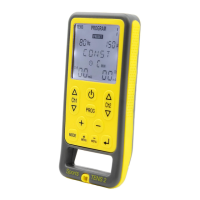How to increase sensation on TensCare Sports TENS 2 Medical Equipment?
- CChristina WilliamsAug 1, 2025
If you're not feeling any sensation from your TensCare medical equipment, the intensity might not be strong enough. Try increasing the strength setting. Most users typically feel something at a setting below 20 mA.




